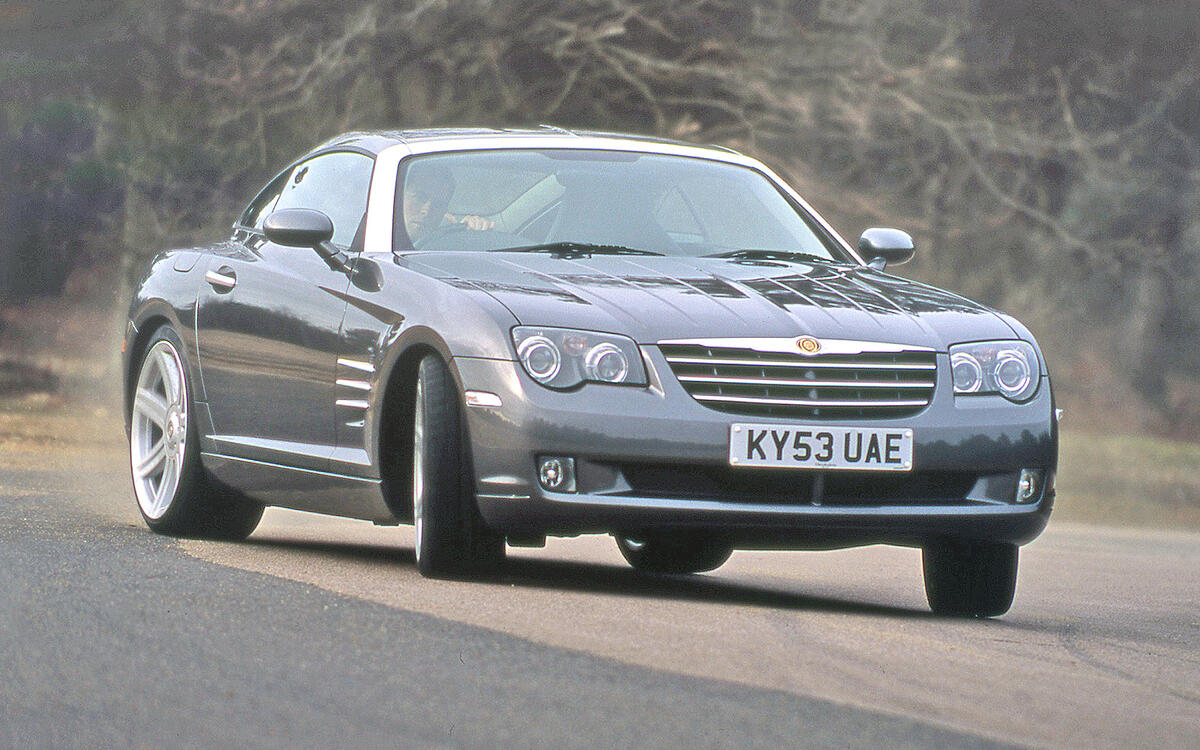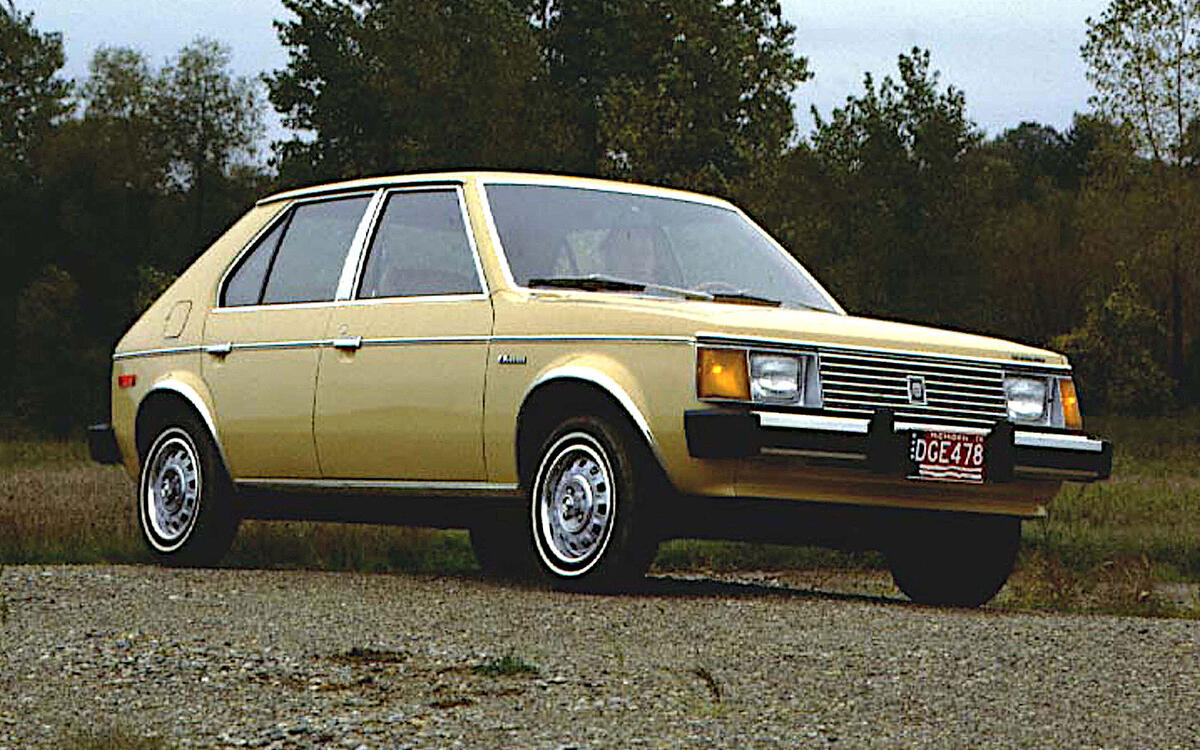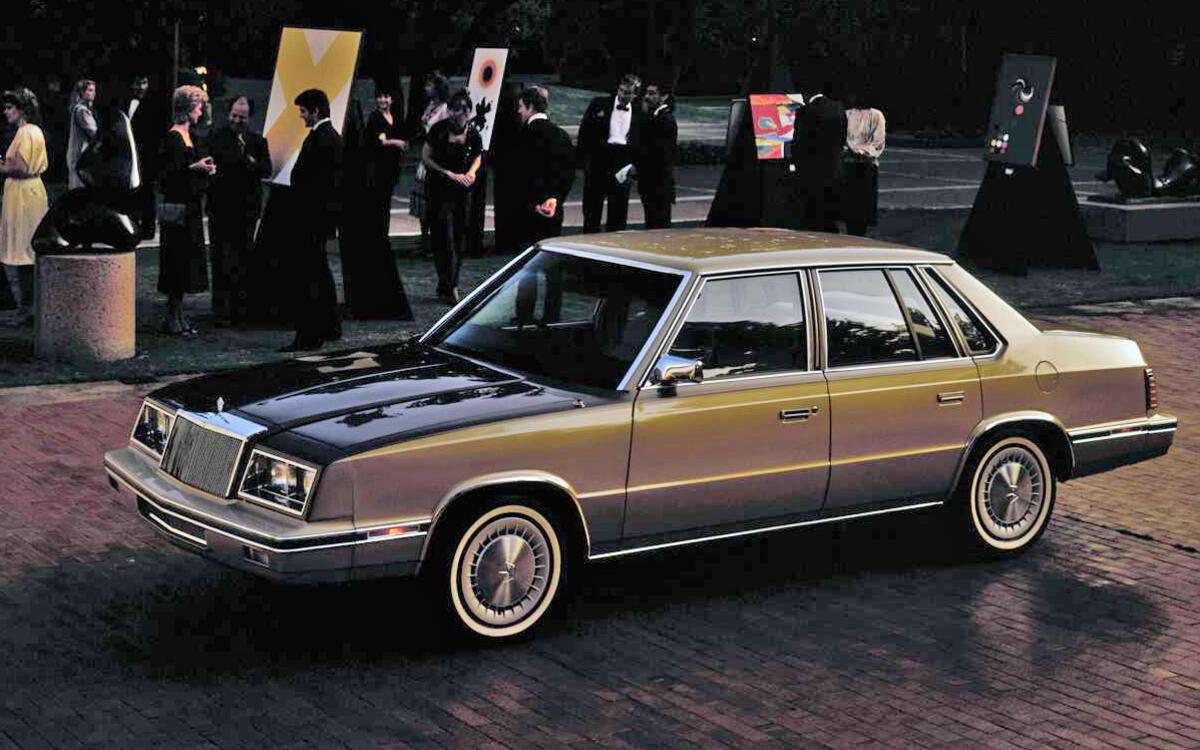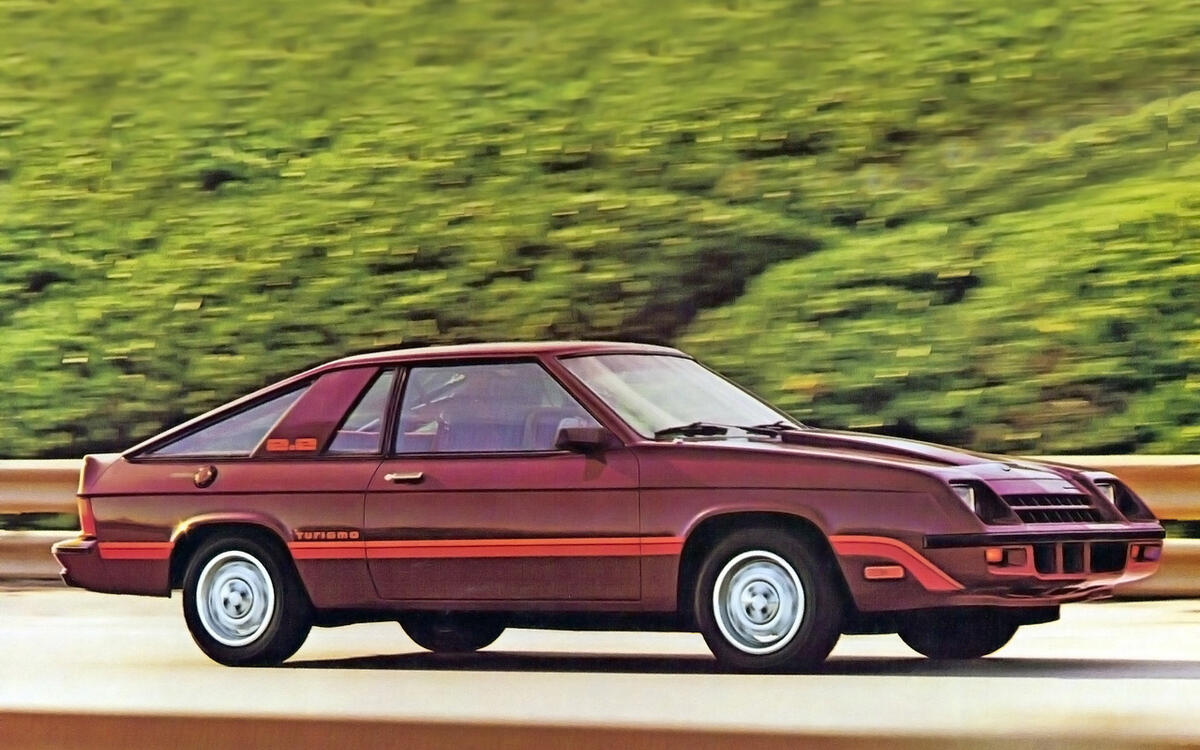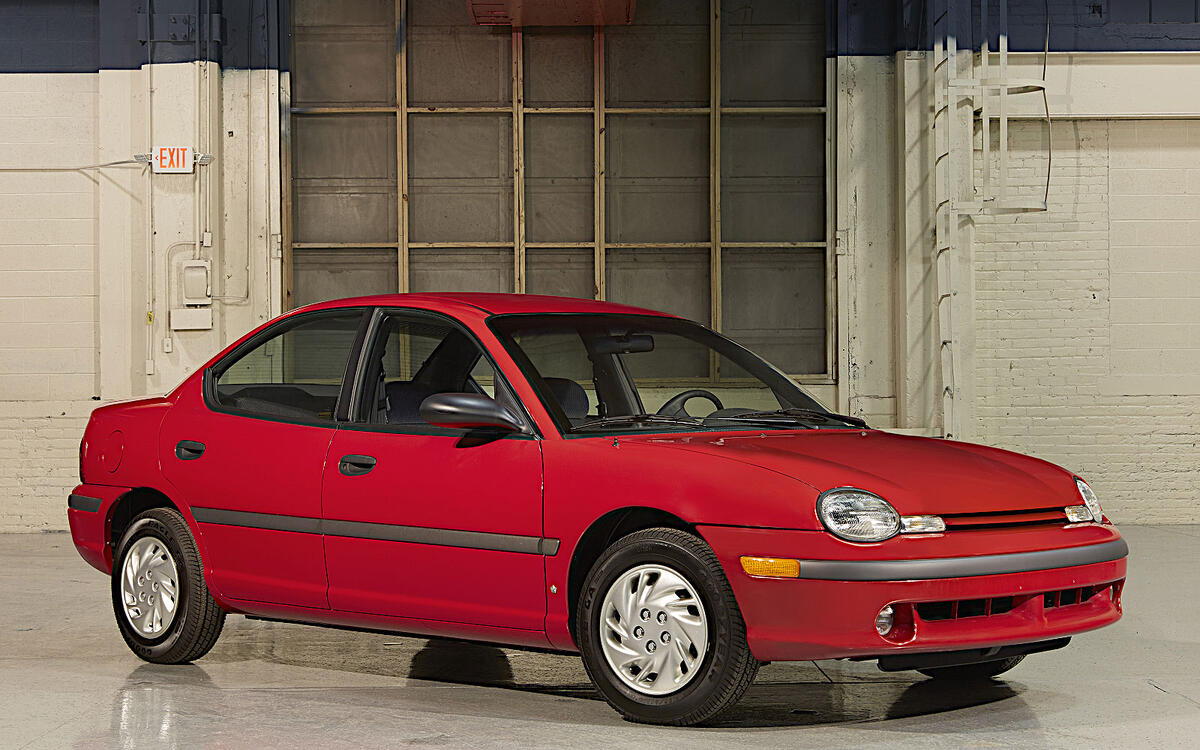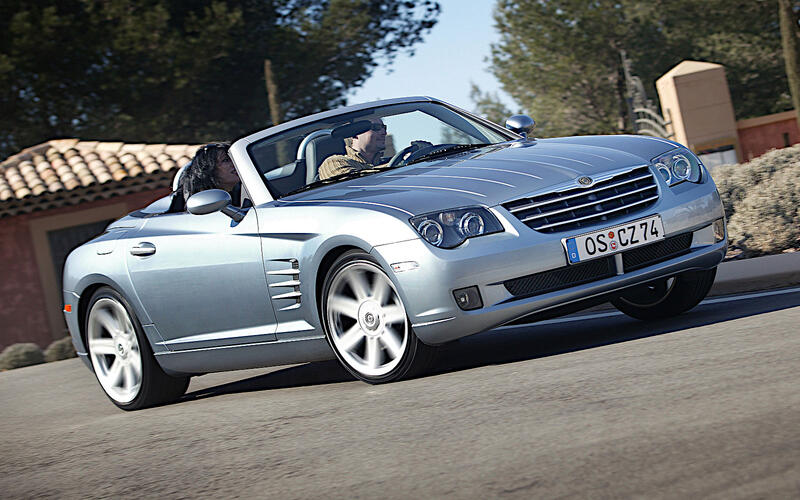 Slide of
Slide of
Very large companies have a complicated relationship with controversy.
They try to avoid it (who wouldn’t?), but it stalks them all the time, ready to pounce. Chrysler, which has been manufacturing vehicles since 1925, has had its fair share of controversial moments, and we’re looking at 40 examples here.
They’re presented in chronological order, and involve both the Chrysler brand itself and others the company has created.
 Slide of
Slide of
Chrysler Airflow (1934)
Chrysler avoided major controversy for nearly a decade until it launched the Airflow. The Airflow wasn’t a bad car – on the contrary, it was very advanced, with an aerodynamic shape, unibody construction and extravagant styling.
Its problem was that the public just wasn’t ready for this sort of thing in 1934. Chrysler quickly toned down the styling, but that didn’t help. The Airflow, brilliant as it was, remained unsuccessful, and was canned after the 1937 model year; the industry wouldn’t really embrace the aerodynamic approach again until after the second world war.
 Slide of
Slide of
DeSoto Airflow (1934)
DeSoto’s Airflow was a shorter-wheelbase version of the Chrysler model which sold in higher numbers, largely because it was cheaper.
Despite that, it was on the market for even less time, being cancelled in 1936 in favour of another badge-engineered Chrysler, the still relatively streamlined but otherwise far more conventional Airstream.
 Slide of
Slide of
Chrysler C-300 (1955)
The first of the Chrysler 300 ‘letter series’ cars is known retrospectively as the 300A but was sold in 1955 (its only model year) as the C-300. The number referred to the gross power output of its 5.4-litre FirePower Hemi V8 engine, though by modern measurements this would have been far less than 300bhp. It was, however, nearly double the figure produced by other FirePowers at the time.
The C-300 was so fast that Tim Flock (1924-1998) was able to win that year’s NASCAR series by 9596 points to his closest rival’s 8088. The opposition wasn’t happy, but greater motorsport controversy was still to come.
 Slide of
Slide of
Dodge La Femme (1955)
In a move which would raise more than a few eyebrows today, Dodge attempted to attract female buyers by taking its existing Custom Royal Lancer, painting it pink and white, adding such delights as a lipstick case, a comb and a cigarette lighter to the list of standard equipment, calling the result La Femme and describing it as being ‘by special appointment to Her Majesty . . . the American Woman’.
The success of the enterprise can be judged from the fact that the La Femme fell off the price list in 1957, just two years after its introduction.
 Slide of
Slide of
DeSoto Adventurer (1956)
With occasional exceptions like the Airflow mentioned previously, DeSoto generally produced undramatic cars. The Adventurer was quite different. Luxurious and very powerful, it was a credible alternative to the significantly more expensive 300 letter series Chryslers.
It made its debut in 1956, just as DeSoto was becoming renowned for quality control problems, and a recession was making it clear that Chrysler had one brand too many. DeSoto survived only until 1961. The Adventurer, which should have been a sign of its future, instead became its last hurrah.
 Slide of
Slide of
Valiant (1960)
Plymouth used Valiant as a model name for a decade and a half, but in the 1960 model year it was a brand in its own right. The new compact model was very highly regarded for its performance and handling, but its radical styling – including side protrusions which would have any safety organisation clutching the table for support today – was the sort of thing you either liked or you didn’t.
The Society of Illustrators certainly did. In 1962, it gave the Valiant (now badged as a Plymouth) an award for styling excellence. Despite that, Plymouth gave the second-generation Valiant a much more restrained look the following year.
 Slide of
Slide of
Chrysler Turbine
Very few manufacturers have taken gas turbines seriously, and none persevered with the idea for longer than Chrysler. It came closest to mass production in 1963, when it began building Chrysler Turbines which were loaned to members of the public for an evaluation programme.
Most of these attractive cars were scrapped after the programme ended, which can now be regarded as unfortunate. Chrysler continued with turbine development until the late 1970s before abandoning ship. Depending on what mood you’re in, the whole exercise can be regarded as an exciting technical adventure, or a massive waste of time and money, or something in between.
 Slide of
Slide of
Plymouth Belvedere
Fitted with Chrysler’s new second-generation 7.0-litre V8 Hemi engine, the 1964 Belvedere dominated that year’s NASCAR series, giving Richard Petty (born 1937) the first of his seven Drivers’ titles. The NASCAR authorities then banned the Hemi on the grounds that it wasn’t available to the public. Petty (and Chrysler in general) responded by not competing in 1965.
A ‘street’ Hemi was developed for road cars, and the engine was later allowed back into the sport, which brought this particular controversy to an end.
PICTURE: 1965 model
 Slide of
Slide of
Chrysler Europe (1967)
In an attempt to expand into Europe (where GM and Ford had been present for many decades), Chrysler bought stakes in the Rootes Group (UK), Simca (France) and Barreiros (Spain), and consolidated them into a new operation called Chrysler Europe in 1967. As a result, its portfolio expanded to include existing models such as the Hillman Imp (pictured) and Hillman Hunter – and their derivatives – along with the Simca 1000, 1100, 1301 and 1501.
These were joined by the Hillman Avenger, Chrysler 180 and Chrysler Alpine in the 1970s, but the project was generally unsuccessful, and with the wider company virtually bankrupt, it was sold to PSA Peugeot Citroen in 1978. The company attempted to break into Europe again later, but never with so much effort, or at such expense, as in the Chrysler Europe days. Today, Chrysler finds itself in bed with Peugeot and Citroen as part of the Stellantis group.
 Slide of
Slide of
Dodge Charger Daytona (1969)
Ford raised the NASCAR game in 1969 with the Talladega and the Spoiler II – variants of the Ford Torino and Mercury Cyclone respectively with slightly more aerodynamic front ends. Chrysler responded in radical fashion with the Dodge Charger Daytona, which had a carefully-shaped nose cone and an incredibly tall rear wing.
Pete Hamilton (1942-2017) won, appropriately enough, the 1970 Daytona 500 in such a car, but he didn’t compete in many NASCAR rounds that year. Bobby Isaac (1932-1977) did, and won the Drivers’ title. Regular road users could share in his glory by buying the homologation special which made the racers possible, but the glory was short-lived. Although NASCAR didn’t ban the Daytona outright, it did bring in a rule which forced Dodge to run a smaller engine, immediately rendering it uncompetitive.
 Slide of
Slide of
Chrysler Hurst 300 (1970)
The C-300 mentioned earlier was the first in the 300 letter series, which consisted of cars which were fast, dramatic and expensive. They were joined, and eventually replaced, by the non-letter 300s, which were still fast, but less dramatic and cheaper. This all seems straightforward, but there is a difference of opinion about which category the 1970 Hurst 300 falls.
It was part of the non-letter series, but because it was modified by Hurst Performance Corporation and had the most powerful available version of Chrysler’s 7.2-litre RB engine, some authorities believe it is in the spirit of the letter cars and should be considered as one of them. The Chrysler 300 Club International has stated that it does this, but not everyone agrees.
 Slide of
Slide of
Plymouth Superbird (1970)
The Superbird was every bit as dramatic as the Dodge Charger Daytona, and built for exactly the same reason – to dominate NASCAR racing by means of better front-end aerodynamics and superior rear-end downforce. They couldn’t both do this in the same year, and although Richard Petty won more races than Bobby Isaac did (most of them, oddly, after an enormous crash in May) it was Isaac who won the 1970 title in his Dodge.
As with the Daytona, both the car’s success and its resulting legalised descent into uncompetitiveness were controversial at the time.
 Slide of
Slide of
Plymouth Cricket (1970)
As far removed from the Superbird as could be imagined, the Cricket was a mildly altered, rebadged version of the Hillman Avenger, designed and built in the UK. On its home market, the Avenger was a plausible, and indeed successful, alternative to other compact saloons such as the Ford Escort, Morris Marina and Vauxhall Viva.
In North America, it was regarded very differently. The general feeling was that whatever a small saloon – Plymouth or otherwise – should be, the Cricket wasn’t it. While the Avenger was introduced in 1970 and survived all the way through to 1981, the Cricket was available only in the 1971 to 1973 model years, after which Chrysler decided it should stay in Europe. In a vain effort to emphasise that it wasn’t too small, the company used unusually stout models to show it off (pictured).
 Slide of
Slide of
Dodge Dart Demon (1971)
The high-performance version of the Dart was at one point going to be called Beaver, but for one reason or another this didn’t happen. Instead, it was given the name Demon for the 1971 and 1972 model years before Dodge decided to rechristen it Sport.
By many accounts, the change was a response to loud complaints by religious groups about a car being named after a malevolent supernatural entity. More than half a century later, all contemporary reports about this seem to have disappeared, but whether it happened or not it’s a good story.
 Slide of
Slide of
Chrysler Valiant Charger (1972)
A high-performance variant of the 1972 Valiant Charger was one of three Australian homologation specials involved in the ‘supercar scare’ sparked off by an article in the Sydney Sun-Herald newspaper. Milton Morris (1924-2019), Transport Minister for New South Wales, was quoted as saying that he did not object to the cars being raced by expert drivers, “But the thought that ordinary motorists of varying degrees of skill will be able to purchase these bullets on wheels and drive them on public roads is alarming.”
In the scandal which followed, the special Charger, along with its Ford Falcon and Holden Torana rivals, were all cancelled, and did not appear either on the road or on the track.
 Slide of
Slide of
Chrysler Centura (1975)
The Centura was a locally-built version of the European Chrysler 180, fitted with either the normal four-cylinder Simca engine or an Australian straight-six. The six was mounted in the same place as the four, but since it was longer and heavier it shifted the weight distribution away from the rear wheels (creating wheelspin) and towards the fronts (creating understeer).
In this form, the Centura went well in a straight line but was otherwise unsatisfying. Chrysler Australia had to stop building it when Chrysler Europe was sold to Peugeot, which, given the reputation it had developed, was probably for the best.
 Slide of
Slide of
Dodge Aspen (1976)
The Aspen replaced the Dart in the 1976 model year, and immediately found favour with North American buyers for its many fine qualities, including attractive styling. Its reputation soon collapsed when it became clear that the car had major quality issues, and was frequently subject to recalls.
According to Chrysler president and CEO Lee Iacocca (1924-2019), who can’t be blamed for any of this because he didn’t join the company until 1978, the Dart had been introduced “a full six months” before it was ready, and “often started to come apart after only a year or two”. Early customers, he later wrote, “were actually acting as Chrysler’s development engineers”.
 Slide of
Slide of
Plymouth Volare (1976)
The Volare was essentially a Dodge Aspen with a different badge, and therefore shared all that model’s problems. Writing about the Volare (though he may also have been referring to the Aspen), Lee Iacocca referred to insufficient rustproofing of the fenders, which rotted away and were voluntarily replaced by the company in 1980, the model’s final production year.
According to Iacocca, this programme cost $109 million, the equivalent of over $400 million in today’s money. In the same year, Chrysler had to be bailed out by the US Government to the tune of around $1.5 billion in federal loan guarantees.
 Slide of
Slide of
Chrysler Sunbeam (1977)
By basing it on the existing Avenger, Chrysler Europe’s UK arm was able to take the Sunbeam from the drawing board to the showroom in just 19 months. The downside was that it was rear-wheel drive (already starting to seem old-fashioned in 1977), and there was no time to develop anything other than a three-door hatchback. This was certainly the best option, but rivals offered more.
Production ended in 1981 due to the controversial but inevitable closure of Chrysler’s Linwood plant near Glasgow. In the same year, the Sunbeam reached the height of glory. The 2.2-litre Lotus derivative (pictured) became the second last rear-wheel drive car to win the Manufacturers’ title in the World Rally Championship, but by then Peugeot was in charge, the branding had changed to Talbot, and Chrysler was no longer involved.
 Slide of
Slide of
Matra Rancho (1977)
Based on the Simca 1100, the front-wheel drive Rancho was an extraordinary machine, with a rugged appearance, a two-level roof and a bountiful supply of luggage space. Apart from the fact that it was almost absurdly easy to break into (a problem soon attended to), the Rancho was controversial for not being particularly good off-road even though it looked as if it should be.
During its lifetime, from 1977 to 1984, this was seen as a problem. Ironically, this would not be seen as a problem today, when most SUVs are regarded as everyday transport rather than tools for crossing rough ground without getting your shoes dirty.
 Slide of
Slide of
Chrysler Horizon (1978)
The Chrysler (also Simca, later Talbot) Horizon won the Car of the Year award in 1979. This has been a cause for puzzlement ever since – not least because the Audi 80 was placed a distant third – and isn’t even celebrated particularly enthusiastically on the CotY website, which states that heavy steering and poor performance “were concerns for some jurors”.
At least the Horizon had front-wheel drive and looked more up-to-date than the roughly contemporary Sunbeam, though like that car it was only ever available as a hatchback.
 Slide of
Slide of
Dodge Omni (1978)
Also badged as the Plymouth Horizon, the Omni was basically the European Chrysler Horizon modified to suit North American markets, a process which, oddly, included fitting a Volkswagen engine in some cases.
Controversy arose when the Consumers Union rated the Omni/Horizon “not acceptable” after performing a handling test. Chrysler replied that the test had “no validity in the real world of driving”, and suggested that an apology was in order. Consumers Union declined to give one, and stood by its findings. The Department of Transportation said the test had “no significant relationship to any real world driving task or manoeuvre”, to the surprise of the Center for Auto Safety, which said it had received complaints from customers.
 Slide of
Slide of
Chrysler E-Class
Sometimes a car just doesn’t work out, for no apparent reason. The E-Class sat between Chrysler’s cheaper LeBaron and more luxurious New Yorker and Dodge 600, and was comfortably outsold by all of them. Customers simply didn’t take to it.
Chrysler responded to the situation by discontinuing the E-Class at the end of 1984, the second of its two model years (pictured), then adjusting it slightly and rebranding it as the Plymouth Caravelle. The Plymouth was sold for four years and performed a little better in the marketplace, though not by much.
 Slide of
Slide of
The odometer tampering case (1987)
In 1987, it was found that Chrysler test drove – and in some cases, including that of a Plymouth Turismo (pictured), crashed and repaired – cars before their odometers were hooked up, giving buyers the impression that they were newer than they really were. Lee Iacocca, who admitted that the scheme was “dumb”, also said that it had been common practice in the US auto industry for many years, adding, “Naively or not, we always thought the testing was part of the manufacturing process.”
The settlement cost Chrysler around $26 million, partly in cash compensation to affected buyers and partly in the form of extended warranties.
 Slide of
Slide of
Chrysler TC by Maserati (1989)
Like the slightly earlier Cadillac Allanté, the TC by Maserati was a startling piece of extravagance. Chrysler designed it, but Maserati designed and built the body, and did all the assembly.
Awkwardly, the car was priced in such a way that Chrysler lost a lot of money on it, but still higher than it seemed to be worth. It was produced only from 1989 to 1991, but is now more highly regarded than it used to be because you can buy one relatively cheaply.
 Slide of
Slide of
Jeep Grand Cherokee (1993)
The first- and second-generation Grand Cherokees manufactured from 1993 to 2004 had been out of production for several years before serious claims began to emerge that it was vulnerable to being set on fire if hit from the rear by another vehicle.
Chrysler consistently maintained that there was no design flaw, as suggested, but in 2013 it agreed to fit trailer hitches to Grand Cherokees which did not already have them, or replace aftermarket ones (at no cost to owners in each case), in order to protect the fuel tank.
PICTURE: 2002 Jeep Grand Cherokee
 Slide of
Slide of
Plymouth Prowler (1997)
Almost the only thing the Plymouth Prowler (later renamed Chrysler Prowler) had in common with the Matra Rancho was that neither was quite what it appeared to be. The Prowler looked like an old-school V8 hot rod, but it was powered by a 3.5-litre V6 engine and automatic transmission, which onlookers regarded as disappointing or inappropriate in varying degrees.
Chrysler actually addressed this issue with the Plymouth Howler, which had a 4.7-litre V8 and a five-speed manual gearbox, but that was a one-off concept designed to attract attention at the 1999 SEMA Show, and did not lead to a production model.
 Slide of
Slide of
Chrysler Voyager
In 1999, Euro NCAP issued a damning report about the safety of the Voyager. The minivan was given two stars out of five for adult occupant protection, entirely on the basis of its performance in a side impact (it scored zero in a frontal impact). Euro NCAP also noted that “the Voyager made no obvious concessions to pedestrian protection”.
The Insurance Institute for Highway Safety was slightly less critical of the Dodge Grand Caravan (a long-wheelbase version of the same vehicle), but gave it an overall rating of Marginal.
 Slide of
Slide of
Chrysler Neon (1994)
The Insurance Institute of Highway Safety has rarely been as critical of any car’s crashworthiness as it was in the case of the Neon. After a side impact test conducted in 2005, IIHS CEO Adrian Lund said the compact had “major problems, beginning with its structure. If this had been a real driver in a real crash, it’s likely it wouldn’t have been survivable.”
The test car was not fitted with side airbags. Chrysler could have requested another test of a car which had them, but didn’t, leading Lund to conclude, “The company probably didn’t think side airbags would make a big difference.”
 Slide of
Slide of
Chrysler PT Cruiser (2000)
Introduced in the 2001 model year, when retro styling was all the rage, the PT Cruiser was generally admired at first, but by the time it was discontinued in 2010 public interest had declined considerably. Since the car was based on the Neon, not much could be expected of it, but most versions were far better than the convertible, which was noisy and had a lot of scuttle shake.
An extreme view of the car was expressed by Lucas Stoffel of Akron, New York, who in November 2020 set up an online petition titled ‘Make the PT Cruiser illegal’. As of September 2023, it had 21 signatures.
 Slide of
Slide of
Jeep Liberty (2002)
The first-generation Liberty SUV, produced from 2002 to 2007, was the successor to the Cherokee in North American markets, but retained the old name elsewhere. After it was discontinued, it was subject to the same investigation as the 1993-2004 Grand Cherokee, and for the same reason – a risk of fire in the event of a rear impact.
As with the larger vehicle, Chrysler fitted Libertys with trailer hitches if they didn’t already have them, to provide more protection for the fuel tank.
 Slide of
Slide of
Chrysler Crossfire (2003)
The Crossfire was made possible by the merger of Chrysler and Daimler, which occurred in 1998 and lasted for nine years. Available as both a coupe and a convertible, it featured dramatic styling, and was powered by a 3.2-litre V6 engine, either supercharged or not depending on exactly which Crossfire it was fitted to.
At launch in the 2004 model year, it seemed very new, but in fact it was largely a first-generation Mercedes SLK, which was just going out of production. What was no longer good enough for Daimler was apparently good enough for Chrysler, a fact noted by journalists - and would-be buyers, it seems
 Slide of
Slide of
Dodge Caliber (2007)
The Caliber was part of Chrysler’s attempt to introduce the Dodge brand to Europe, where it was previously known to almost nobody, and is part of the reason why the company gave up the attempt after only a few years.
Chrysler UK emphasised its looks and its low cost, but these were not enough to make it appealing. Having driven one in 2016, we reported that it was “underwhelming and outclassed”, and decided that Dodge had “confused value for money with cheapness”.
 Slide of
Slide of
Chrysler Sebring (2007)
The third-generation Sebring, introduced in 2007, was based on a reworked version of a platform Chrysler had co-developed with Mitsubishi, and used in many of its vehicles. In North America, it was described as being “notorious for quality issues and fleet pervasiveness”, while reviewers in Europe were largely hostile – “keen motorists will simply walk on by and go straight to a Ford dealership for a Mondeo,” we said.
In 2010, Chrysler updated the car and renamed it 200. In this form, it was far more popular, partly – it has been suggested – because buyers now thought of it as “the younger brother of the flagship 300”.
 Slide of
Slide of
Chrysler Voyager
The 2001-2007 Voyager MPV/minivan received generally favourable reviews in the US, but was heavily criticised by Euro NCAP. The safety organisation based its very low rating partly on a right-hand drive model which, unlike its left-hand drive equivalent, did not have a driver’s knee airbag. Adult occupant protection was scored very low, child occupant protection was good (four stars out of five) and pedestrian protection was given a score of zero.
In 2011, Euro NCAP tested the next-generation Voyager (badged in Europe as a Lancia) and found it to be very much better than its two predecessors.
 Slide of
Slide of
Dodge Dart (2022)
After a gap of nearly 40 years, Dodge resurrected the Dart name in 2012 for a compact saloon based on a platform designed by Fiat, which would merge with Chrysler two years later. Sometimes described as having been brought to market before it was ready, as the Aspen had been in the 1970s, it wasn’t regarded as a great car, and little regret was expressed when Chrysler announced it was calling a halt so that it could devote more production time to building SUVs.
Speaking of both the Dart and the Chrysler 200, which was discontinued at around the same time, Fiat Chrysler boss Sergio Marchionne (1952-2018) created some controversy of his own when he said they were “the least financially rewarding enterprises that we’ve carried out in the last eight years. I don’t know one investment that was as bad as these two were.”
 Slide of
Slide of
Chrysler 200 (2015)
The second-generation 200, unlike the first, had no connection to the Sebring and was, like the Dodge Dart, based on a Fiat platform. Sales were decent and safety ratings from both the IIHS and the NHTSA were excellent, but the car was produced only in the 2015 to 2017 model years.
Some of Sergio Marchionne’s remarks about it have already been noted. To add to that controversy, he also said that the rear of the 200 was difficult to climb into because of a design feature Chrysler had copied from a Hyundai (possibly the Sonata). “Some people from design left their private parts on the table after we came up with that determination,” he said, colourfully. “But I think we’re learning from this process.”
 Slide of
Slide of
Ram 1500 (2018)
Large American pickup trucks are a subject of discussion in any case, but the Ram 1500 became a subject of particular controversy when a commercial for it was aired at the Super Bowl on 4 February 2018. The audio was part of the Drum Major Instinct sermon delivered by Martin Luther King exactly 50 years earlier, and included the line, “You only need a heart full of grace, a soul generated by love,” but not, strangely enough, King’s negative comments about advertising in general and car advertising in particular.
Intense discussion about whether Chrysler should have used the sermon quickly followed. The company pointed out that the Martin Luther King, Jr. estate had given its approval. The separate Martin Luther King, Jr. Center, and King’s daughter Bernice, pointed out that they had not done so.
 Slide of
Slide of
Dodge Charger Jailbreak (2022)
People who think high-performance cars are too powerful nowadays were no doubt glad to hear that the Dodge Charger will be discontinued after the 2023 model year. They would have been less pleased about the 2022 introduction of the provocatively-named Jailbreak derivative, whose various upgrades included a 10bhp increase in the output of its supercharged 6.2-litre V8 engine to 807bhp.
Chrysler says that the Jailbreak is the world’s most powerful and fastest four-door muscle car, but a year after its introduction it’s no longer the most powerful Dodge.
 Slide of
Slide of
Dodge Challenger (2023)
The Charger Jailbreak’s enormous output is put in the shade by the special edition Challenger SRT Demon 170, of which only 3300 have been made available for sale in Canada (where it’s built) and the US.
As along as the electronics determine that the ethanol content in the fuel is optimal, the engine can produce 1025bhp, which Dodge says means a 0-60mph time of just 1.66 seconds. This won’t go down well in some quarters, but at least – unlike the Dart Demon of the early 1970s – there doesn’t seem to be any controversy about the name. The model is a mighty swansong for the Challenger, which will end production in 2023.
Access control:
Open

